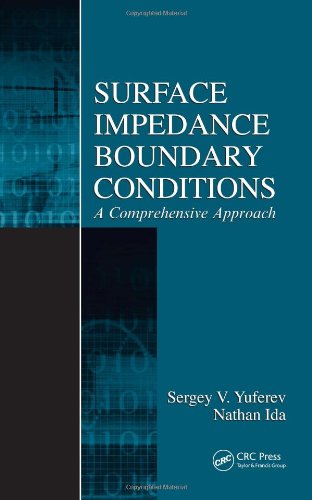

Most ebook files are in PDF format, so you can easily read them using various software such as Foxit Reader or directly on the Google Chrome browser.
Some ebook files are released by publishers in other formats such as .awz, .mobi, .epub, .fb2, etc. You may need to install specific software to read these formats on mobile/PC, such as Calibre.
Please read the tutorial at this link. https://ebooknice.com/page/post?id=faq
We offer FREE conversion to the popular formats you request; however, this may take some time. Therefore, right after payment, please email us, and we will try to provide the service as quickly as possible.
For some exceptional file formats or broken links (if any), please refrain from opening any disputes. Instead, email us first, and we will try to assist within a maximum of 6 hours.
EbookNice Team

Status:
Available4.8
7 reviewsSurface Impedance Boundary Conditions is perhaps the first effort to formalize the concept of SIBC or to extend it to higher orders by providing a comprehensive, consistent, and thorough approach to the subject. The product of nearly 12 years of research on surface impedance, this book takes the mystery out of the largely overlooked SIBC. It provides an understanding that will help practitioners select, use, and develop these efficient modeling tools for their own applications. Use of SIBC has often been viewed as an esoteric issue, and they have been applied in a very limited way, incorporated in computation as an ad hoc means of simplifying the treatment for specific problems.
Apply a Surface Impedance ''Toolbox'' to Develop SIBCs for Any Application
The book not only outlines the need for SIBC but also offers a simple, systematic method for constructing SIBC of any order based on a perturbation approach. The formulation of the SIBC within common numerical techniques—such as the boundary integral equations method, the finite element method, and the finite difference method—is discussed in detail and elucidated with specific examples. Since SIBC are often shunned because their implementation usually requires extensive modification of existing software, the authors have mitigated this problem by developing SIBCs, which can be incorporated within existing software without system modification.
The authors also present:
A careful mix of theory and practical aspects, this is an excellent tool to help anyone acquire a solid grasp of SIBC and maximize their implementation potential.